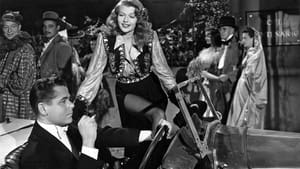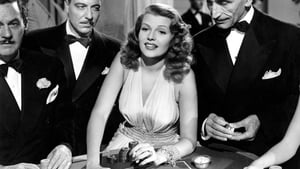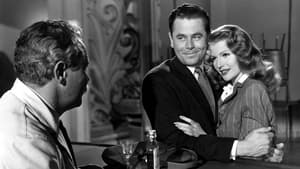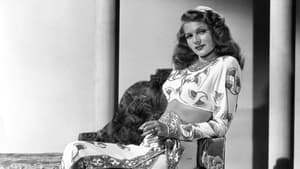Video Sources 0 Views
- Watch trailer
- Gilda 1946 Colorized

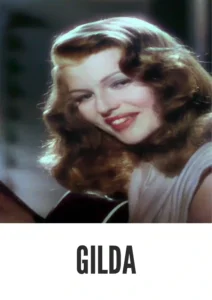
Synopsis
Table of Contents
Toggle
Enter the shadowy world of Gilda, a mesmerizing film noir from 1946, now exquisitely colorized to captivate a new generation. Starring the iconic Rita Hayworth as Gilda, alongside Glenn Ford, this film weaves a tale of love, jealousy, and betrayal against the backdrop of a Buenos Aires casino. Perfect for fans of classic cinema and those drawn to the dark allure of film noir, this HD download brings a legendary piece of cinematic history to life. Often considered a cornerstone of the film noir genre, Gilda explores complex relationships and the destructive power of obsession.
Gilda tells the story of Johnny Farrell (Glenn Ford), a charismatic gambler who arrives in Buenos Aires and quickly finds work at a high-end casino owned by Ballin Mundson (George Macready). Johnny’s life takes a complicated turn when Ballin introduces him to his new wife, Gilda (Rita Hayworth), a woman from Johnny’s past.As Johnny and Gilda navigate their complicated history, a tangled web of jealousy, desire, and suspicion emerges. Ballin’s manipulative nature exacerbates the tension, leading to a series of dramatic confrontations and betrayals. Johnny is torn between his loyalty to Ballin and his undeniable attraction to Gilda. The film explores themes of fate, passion, and the destructive nature of secrets. The film culminates in a series of dramatic revelations, forever altering the lives of the main characters. Gilda is known for its iconic performances, especially Rita Hayworth’s captivating portrayal of the titular character, and its stylish visuals, typical of the film noir genre.
The film boasts a stellar cast, delivering unforgettable performances:
- Rita Hayworth as Gilda Mundson Farrell
- Glenn Ford as Johnny Farrell
- George Macready as Ballin Mundson
- Joseph Calleia as Detective Maurice Obregon
- Steven Geray as Uncle Pio
Gilda is a quintessential film noir, characterized by its dark and cynical tone, morally ambiguous characters, and stylish visuals. The film blends elements of romance, drama, and suspense to create a compelling and unforgettable cinematic experience.
Released in 1946, Gilda reflects the post-World War II mood of Hollywood, marked by both glamour and disillusionment. The film’s exploration of complex relationships and moral ambiguity resonated with audiences of the time. Gilda solidified Rita Hayworth’s status as a Hollywood icon and helped define the femme fatale archetype. The film’s success also contributed to the growing popularity of the film noir genre, which offered a darker and more realistic portrayal of American society.
This colorized version of Gilda has been carefully restored to enhance the visual impact while respecting the film’s original atmosphere. The colorization process involved meticulous attention to detail, ensuring that the colors complement the film’s mood and enhance the performances of the actors. By adding color, the film gains a new layer of depth, making the story even more accessible and engaging for modern viewers. The colorization was achieved through a combination of advanced digital techniques and artistic interpretation, bringing out the nuances of the costumes, sets, and lighting. This painstaking process aims to preserve the film’s artistic integrity while offering a fresh perspective on a timeless classic.
- : Charles Vidor
- : Marion Parsonnet, Jo Eisinger, E.A. Ellington, Ben Hecht (uncredited)
- : E.A. Ellington
- : Rudolph Maté
- : Charles Nelson
- : Columbia Pictures
- : Columbia Pictures
- : 110 minutes
- : MP4
- : HD (1080p)
- : Compatible with most devices, including smartphones, tablets, computers, and smart TVs.
Gilda is widely regarded as a classic of the film noir genre, praised for its stylish visuals, compelling performances, and complex narrative. Rita Hayworth’s portrayal of Gilda is particularly iconic, and the film cemented her status as a Hollywood legend. While the film has been subject to various interpretations over the years, its enduring appeal lies in its exploration of timeless themes such as love, betrayal, and the destructive power of obsession. Gilda remains a significant and influential work in the history of American cinema.
- : What is Gilda about?
- A: Gilda is a film noir about a complex love triangle set against the backdrop of a Buenos Aires casino.
- : Is Gilda (1946) a well-known film noir?
- A: Yes, Gilda is one of the most iconic and influential films in the film noir genre.
- : Is this version of Gilda colorized?
- A: Yes, this version has been professionally colorized to enhance the viewing experience.
- : What makes Gilda interesting for film noir fans?
- A: Gilda offers a classic example of the genre’s themes, style, and iconic characters, particularly the femme fatale.
- : What is the download format?
- A: The download format is MP4, which is compatible with most devices.
- : What resolution is the download?
- A: The resolution is HD (1080p), providing a high-quality viewing experience.
Watch Gilda Today!
